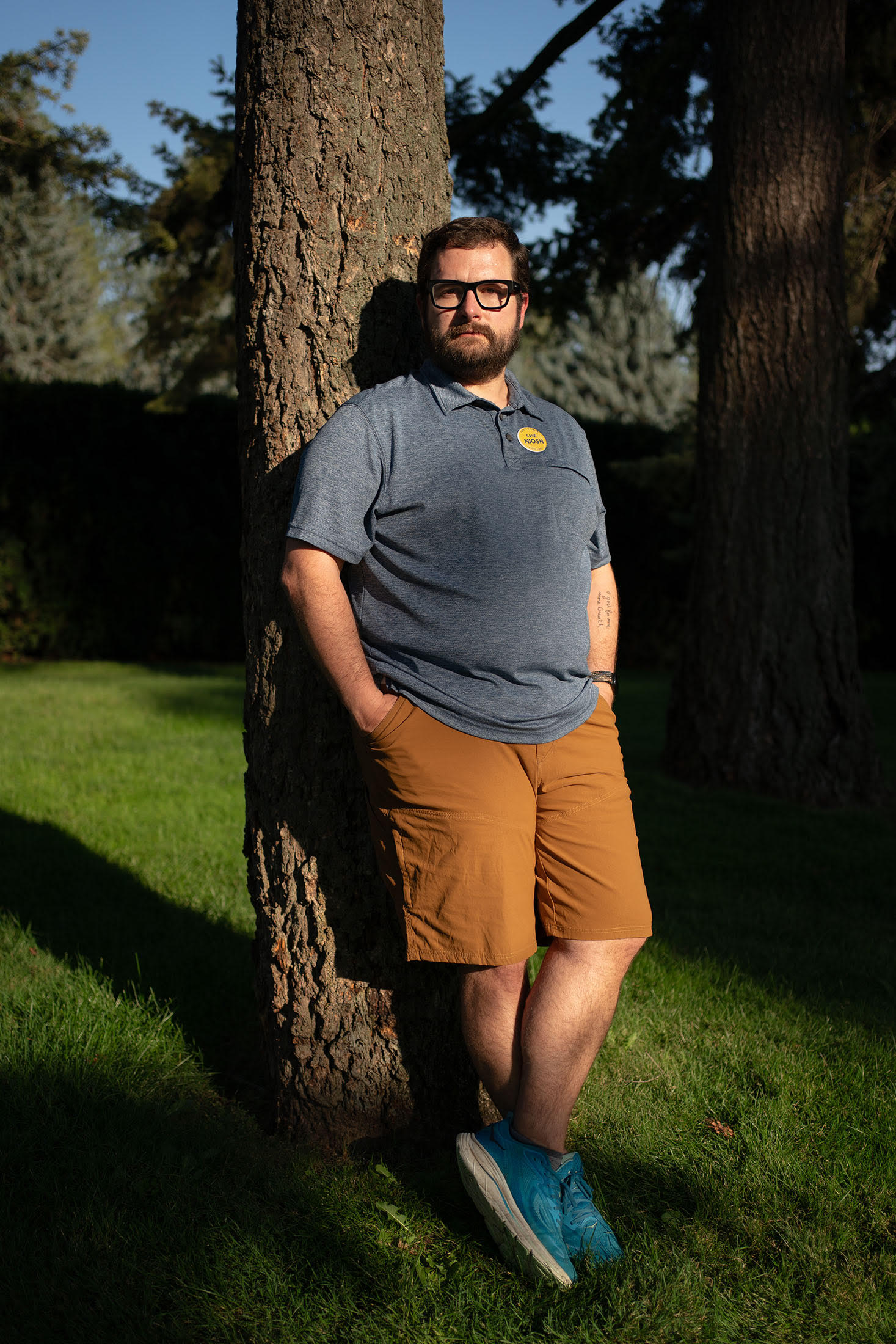Josh Eidelson wins October Sidney for Exposing True Toll of NIOSH Cuts
NEW YORK — Josh Eidelson wins the October Sidney Award for his feature in Bloomberg Businessweek, “How Trump Broke Corporate America’s Most Valuable Consultant.” The story documents the massive cuts to the National Institute for Occupational Safety and Health (NIOSH), a small workplace research agency that contributes billions of dollars of value to the U.S. economy.
Unlike its cousin OSHA, NIOSH is popular with employers because it does research and development that they would otherwise have to pay for. As a result, many large corporations have been up in arms at the cuts. Instead of doing their own studies to see if a respirator is effective or a chemical is toxic, they can look to NIOSH. At least, they could until Donald Trump and Robert F. Kennedy, Jr. revealed plans to terminate 90% of NIOSH’s workforce in April. A fraction of those layoff notices were reversed for now, but the proposed budget slashes NIOSH’s funding by 80%.
Now, efforts to protect firefighters from wildfire smoke and kids from lead exposure are on indefinite hold. A study of the reproductive health effects of chemicals in nail salons has been halted. NIOSH is no longer able to do critical research on topics ranging from bioterrorism to electric vehicle fires. The U.S. Chamber of Commerce has said the cuts could undermine efforts to manufacture more products in the U.S. The full toll of these cuts may not be apparent for years.
“The cuts at NIOSH are another toxic outgrowth of Project 2025” said Sidney judge Lindsay Beyerstein, “workers, consumers, and the economy are in danger.”
Josh Eidelson covers the workplace (“the present of work”) as a senior reporter for Bloomberg News and Bloomberg Businessweek. His work has been honored by groups including the Sidney Hillman Foundation; UCLA Anderson’s Loeb Foundation; the Society for Advancing Business Editing and Writing (SABEW); the Labor and Employment Relations Association (LERA); the New York Labor History Association; the San Francisco Press Club; and the Society of Professional Journalists.

Backstory
Q: Give us an overview of your approach to reporting this complex piece?
Like a lot of my work, this story involved talking to workers about their jobs, and asking anyone willing to have that conversation if they’d be willing to connect me with co-workers who might be up for talking as well.
For some projects those workers have been nurses or mixed martial artists or incarcerated fast food workers; in this case they were scientists employed by NIOSH, the little-known, low-budget CDC agency behind most US workplace safety research.
I traveled to Spokane, Cincinnati, Pittsburgh, Morgantown, and DC to meet NIOSH workers – including some currently on administrative leave while the government tries to fire them, and some who are still working, but whose roles the White House budget proposes to eliminate. Along with forty-some current or recent NIOSH employees, I also talked to dozens of others who’ve worked with the agency - including people elsewhere in government and stakeholders who rely on NIOSH’s work. I also reviewed records that shed light on the effort to dismember the agency, and its impact.
Q: Why was NIOSH subject to such drastic cuts?
Project 2025 architect Russ Vought’s Office of Management and Budget pushed for the huge cuts, people familiar told me. RFK Jr.’s Health and Human Services Department first informed around 90% of NIOSH’s roughly 1,000 staff that their jobs would be eliminated. After that provoked a bunch of litigation and lobbying and protest, CDC officials presented HHS and OMB higher-ups with a series of proposals for partially walking them back; those higher-ups sought to reverse as few of the layoffs as they could while alleviating blowback. In May, RFK Jr. announced he had reversed a fraction of the planned terminations, bringing back 328 of the staff who’d been slated to get cut. Then a couple weeks later, he proposed a budget that would eliminate 80% of NIOSH’s total budget.
One NIOSH employee I spoke with said what was happening to their agency reminded them of high school: the jocks beating up the nerds.
Q: Did anything unexpected happen in the course of reporting this story?
I’ve never reported a story where so many sources showed up with reams of printed-out diagrams, reports, and other reading material they’d compiled for me to help me understand their jobs.
Q: One of your subjects got a tattoo to cope with the stress of the upheavals at Niosh. Can you tell us more about the tattoo and what it means to the guy who got it?
One of the scientists I met with in Spokane, Tim Bauerle, got an arm tattoo in May that reads “Oh God, for one more breath.” It’s a quote from a letter left behind by Jacob Vowell, a Tennessee coal miner who died of oxygen deprivation after a preventable mine explosion in 1902. Tim said he’d seen the letter way back when he started working for NIOSH in 2012. “It just communicated to me the gravity and stakes of our work,” he told me. “Like oh, this is why we’re doing this.”
Q: What are some of the most immediate threats that are going unmonitored and remediated because of these cuts?
NIOSH devices that detect mine cave-in hazards have been collecting data there’s no one left to review. There’s no longer a toxicologist managing the list of hazardous drugs that health-care workers should handle with precautions, or a team setting recommended exposure limits for a wide range of toxic substances and carcinogens. Safety research has been upended on everything from fracking to opioids; on chemical risks in nail salons, electric-vehicle fires, and terror attacks; and on the impacts of mold exposure on heart disease, of trendy artificial-stone countertop production on lungs, and of “forever chemicals” on fetal health. A report on protecting workers from wildfire smoke is frozen at the draft stage too.
Under Trump’s budget proposal, NIOSH would also halt functions like certifying N95s and other personal protective equipment, which one manufacturer told me would force him to stop making respirators. The guy who ran OSHA under George W. Bush described ending PPE certification to me as “Russian roulette.”
Q: What did you learn from this reporting project that you will carry forward to your next assignment?
I’ll be keeping a close eye on what happens next at NIOSH – with legislative, legal, and lobbying efforts all afoot to save the agency – and in the broader struggle over the future of the federal workforce. Wherever you work, please bring me your stories!


